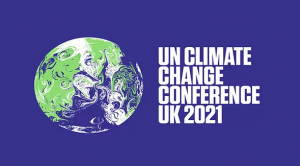Carbon Markets at COP26: Here’s What to Watch for
A Q&A on carbon markets and COP (Article 6, improving market transparency and quality, and reasons for optimism) with Stephen Donofrio, Director of our Ecosystem Marketplace initiative, and Genevieve Bennett, our Director of Communications.


Genevieve Bennett: Hi Stephen! COP26 starts this weekend. How are you preparing right now?
Stephen Donofrio: It’s been busy! After announcing last month that the voluntary carbon markets are on track to hit $1 billion for the first time in a calendar year in 2021, the Ecosystem Marketplace team has been greatly encouraged with incredible interest in our data and insights. This is both from our returning stakeholders, as much as from those who are new to carbon markets.
I’ll be at COP for the full two weeks, presenting data and market developments on a number of panels (listed here – and for any readers of this blog who will also be in Glasgow, let’s find a time to meet!). In general, there seems to be conclusive awareness that in order to achieve the infamous 1.5 degree C Paris Agreement goal, companies and governments to invest in all types of carbon credit projects. And all the while, climate change has become impossible to ignore with as its influence on our natural world are becoming all too regular and familiar. It’s now at a point of “climate action or bust.”
In response to this, we’ve officially activated our daily-capable on-demand online trade reporting for carbon credit sellers to update their Ecosystem Marketplace Global Carbon Survey profiles as trades occur. We have also pushed up our release date of two new versions of the EM Data Intelligence & Analytics Dashboard.
We’re really excited to be able to offer our EM Respondents first access to the more advanced data filters and tools to create customized views of trades prices and volumes, as well as meta-registry issuances and retirements. Additionally, we have updated the public version of our data dashboard, fulfilling our mission of offering the public data, insights, and information.
Article 6, which governs carbon trading, is the one of the last pieces of the Paris rulebook where an agreement still needs to be hammered out. What do we need to know about those negotiations?

In 2019 in Madrid, negotiations got a long way toward designing a pretty solid and transparent system under Article 6. But they didn’t finish, and honestly we’ve saved a lot of the hard stuff for COP26.
The issues left to negotiate are pretty technical, but the gist of it is we need to decide, one, how to handle accounting around internationally traded emissions reductions to avoid countries and private actors “double counting” the same reductions, and secondly the question of how to wind down the CDM.
These issues, by the way, come into play only with a centralized system for emissions trading, i.e., a global carbon market. There is a much clearer path forward for bilateral cooperation between countries, or regional carbon clubs.
There is so much going on at these negotiations. We’re hearing how countries aren’t being ambitious enough, finance is inadequate, this country or that country is going to torpedo the whole thing. How big a deal is Article 6?
Two thirds of countries have said they definitely are going to use Article 6 to meet their NDCs. So it’s important. The upside is I think that means there’s a sense of urgency among a majority of people at the negotiation table to get this done.
With a working Article 6, you create incentives for countries to go beyond their NDCs because they can sell that extra mitigation to other countries. That opens up an express lane for climate solutions.
Carbon market mechanisms help you seek out lower cost solutions. There’s economic analysis showing that with the cost savings you can get from markets, if you reinvested those into climate mitigation, you could double climate ambition at no extra cost.
Second, you create a demand signal that will pull in more private investment into mitigation projects, with huge potential implications for sustainable development. This is a huge opportunity to drive a wave of green finance to countries and places that really need it.
Let me put you on the spot. Are we going to see an Article 6 agreement in Glasgow?
These are tough negotiations, but again there’s a sense of urgency this year. But also there’s a sense that it needs to be the right agreement or you create all these loopholes that undermine the whole Paris effort. So there’s potentially a tension there between getting it done and getting it right.
A lot of people watching this would agree that no agreement would be better than a weak agreement. Especially since you can accomplish quite a lot outside of the UN framework in the meantime even while Article 6 remains unresolved.
Yes, it doesn’t seem like the private sector is waiting on the UNFCCC. That’s been a really interesting dynamic in the last couple of years. For me, honestly a little unexpected too – that despite these delays, despite the global pandemic, that so many companies and cities and universities have grabbed the baton and kept moving forward on their own plans for action.
Absolutely – in the purely voluntary carbon markets we are seeing an incredible surge in demand.
Companies have set ambitious net zero targets, and a lot of them are using carbon credits to tackle that last five percent or so of emissions that are really tricky to address. Things like emissions from business travel, or coming from elsewhere in your supply chain that you don’t have direct control over.
We projected in September that this would be a billion-dollar year for voluntary markets for the first time ever. Demand is higher than we’ve ever seen in the sixteen years we’ve been tracking markets. And that’s starting to move prices upward.
Personally, I think that’s a very good thing. We’re seeing emitters willing to pay more for emissions reductions, and especially for credits that come from projects with all of these other benefits for sustainable development, whether that is protecting forests in the Amazon, or getting clean cookstoves to families in Africa – which especially is good for women – or sustainable agriculture, or so on.
Carbon markets are becoming a bigger and bigger driver of finance for sustainable development. I think that sometimes gets missed in all of this focus on the technical aspects of COP negotiations or the market opportunities that everyone’s excited about in London and New York.
Please see our Reprint Guidelines for details on republishing our articles.

